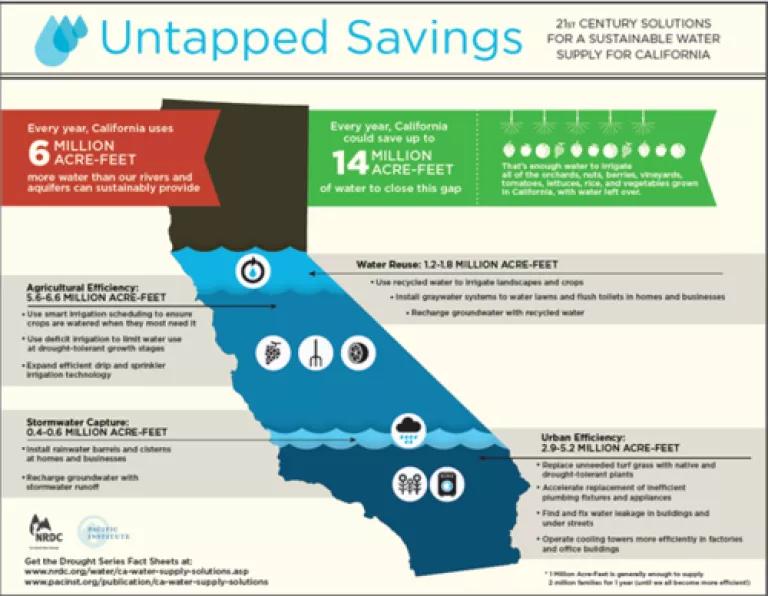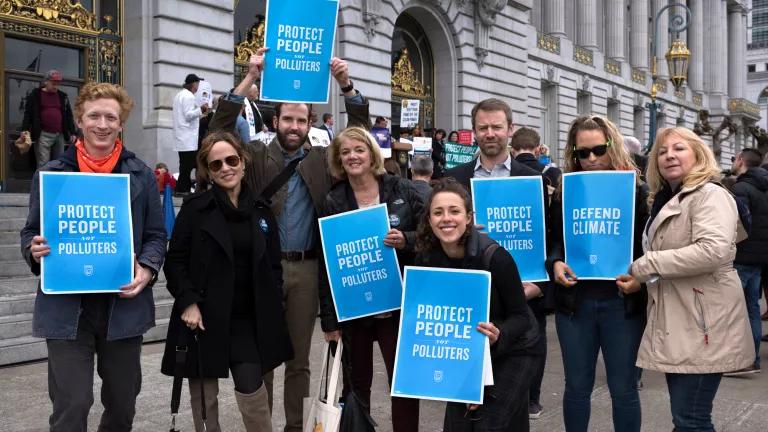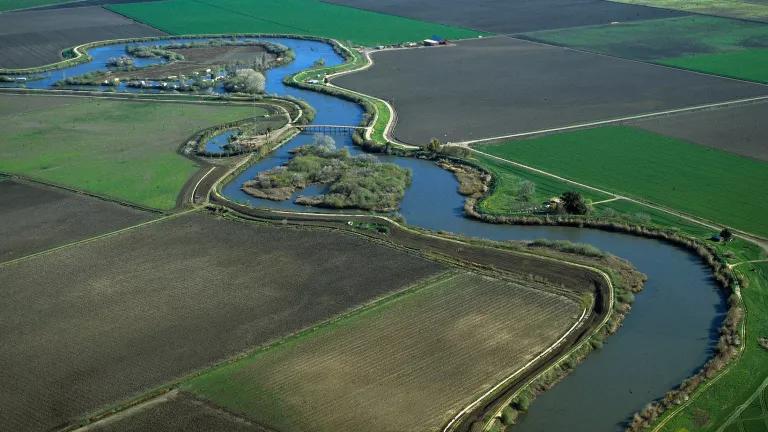As California struggles to respond to one of the worst droughts in generations, we need to do more than shorten our showers and turn off the faucet while brushing our teeth.
California’s water system is broken:
- The San Francisco Bay- Delta – the largest estuary on the West Coast, which serves as the main switching yard for most of our surface water supply – is suffering an ecological collapse.
- We’re draining groundwater aquifers around the state at a rate faster than nature can replenish them, causing the land above over-drafted aquifers to collapse and wiping out these natural water storage reservoirs for all time.
- And more than 80% of our 121 native fish species are on a path to extinction, taking fishing jobs and the livelihoods of fishermen’s families with them, if we don’t do a better job of managing our rivers and streams in the face of myriad threats.
We need long-term, effective responses to these hard challenges. The good news is that we have the solutions to provide water for a growing population and economy while restoring healthy rivers, fisheries, and aquifers. The bad news is that the state is not embracing these solutions in its proposed Bay Delta Conservation Plan, instead falling back on the failed approaches of the last century that rely on taking more and more water out of our natural systems to feed a boundless demand for more water.
The currently proposed (and inaptly named) Bay Delta Conservation Plan or BDCP will neither “conserve” the Bay-Delta nor improve water supply reliability for California – the two goals it set out to achieve.
The plan proposed by the state’s Department of Water Resources would instead take more water out of the Delta than we do today, rather than reducing reliance on the Delta as directed by state law. That approach is contrary to the view of nearly every credible scientist who works in the Delta, who urge us to significantly increase the amount of fresh water flowing through the Delta to improve habitat for salmon and other fish, and reduce the influx of invasive plants, clams and other species.
More flow also improves water quality for farmers in the Delta and the millions of Californians who get some drinking water from Delta. In fact, the big dams, pumps, and canals that make up our current massive water infrastructure in the Delta were originally justified on grounds that they would preserve good water quality in the Delta and help repel saltwater intrusion:
From the Chief of DWR’s Bay Delta Office June 4, 2014 presentation to the Water Education Foundation (http://www.watereducation.org/sites/main/files/file-attachments/marshall_paul.pdf)
But the proposed BDCP ignores this science and these threats in an effort to slake the unquenchable thirst of water wholesalers in the San Joaquin Valley and Southern California with Delta water.
The proposed BDCP also fails to improve water supply reliability for California. Those portions of the state that are doing better in this drought are the areas that have diversified their water supply, so that they are not overly reliant on any one part of the system, including the Delta.
A recent study by NRDC, the Pacific Institute and Professor Bob Wilkinson from the University of California, Santa Barbara shows the enormous potential in California to create literally millions of acre-feet of new water supply through diversified investments in water recycling and reuse, improvements in water use efficiency, and capture and reuse of stormwater that we currently dump in the ocean. Here’s a graphic description of the water supply potential from these tools, which tend to be far more drought-proof than relying on water from the Delta, which, as we’re witnessing this year, simply does not have much water to provide when rain and snow levels are down:

To give you a sense of how much water 14 million acre-feet is, it’s enough water to fill Lake Shasta – California’s largest reservoir – more than three times over. And it’s more than all of the cities in California combined use today (which equals less than 10 million acre-feet of water annually).
For years, we’ve created a false tension between managing for healthy rivers and aquifers and managing for a healthy water supply. The standard thinking has been that we can take more and more water out of our rivers and groundwater basins without destroying them in the process. That’s a failed approach that has led us to the conflict-riddled water system that we have today. It should not be resurrected in the BDCP.
The state should go back to the principles embodied in the 2009 Delta Reform Act that recognize that a healthy water supply and a healthy Delta go hand-in-hand. Because Californians can’t have one without the other.
BDCP can be reconfigured to meet this original intent, but the state will need to have an open mind and be willing to consider alternative ideas that it has so far rejected.



